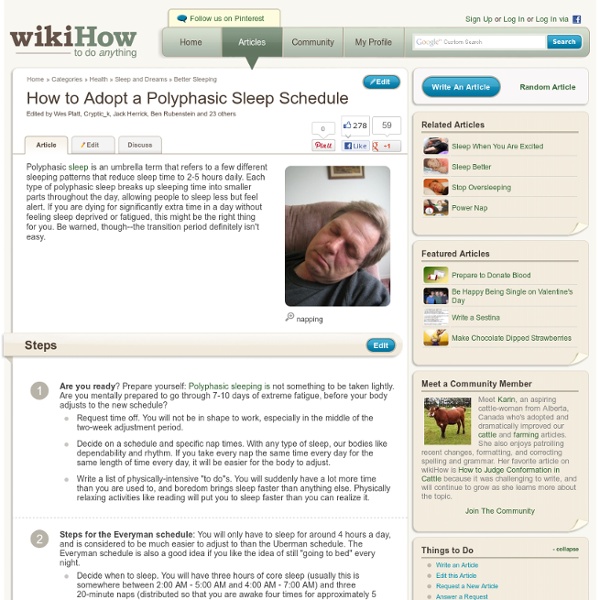How to Adopt a Polyphasic Sleep Schedule

Hacking sleep: Meet the transhumanists making sleep obsolete
Not everyone wants to sleep in. A growing transhumanism community wants to sleep less, and better, and they’re going to great lengths to make it happen. For those unaware, transhumanism is an intellectual and cultural movement that aims to improve the human condition, to push beyond our biological limitations, largely through technological advancements. They’re particularly focused on extreme longevity. The average well-rested person sleeps eight hours a day. Of course, the human brain doesn’t come with an on-off switch. When it comes to pushing electrical currents through your brain, caveat hacker. In a post on The Conversation, Padraic Monaghan, professor of cognition in the Department of Psychology at Lancaster University and director of the Centre for Research in Human Development and Learning, outlines the two important stages of sleep — slow-wave (deep) sleep and REM — and why they matter to our health: The Devices There are appliances available to consumers. The Drugs The Behaviors
How To Take An Effective Nap To Super Boost Your Productivity
“Sleep when you’re dead.” I’ve heard this more times than I can count. The idea is that you’ll have plenty of time to sleep when you die, so don’t waste your time while your alive. Napping and sleeping in general has become a sign of laziness or weakness. But sleep and napping specifically, can actually make you a better and more productive person overall. So, get comfy, lean back and get a few winks. Take Off Your Shoes This is really essential. Lay Down Laying down for a nap tells your body that you are ready to sleep. “Sleep not only rights the wrong of prolonged wakefulness but, at a neurocognitive level, it moves you beyond where you were before you took a nap,” said Matthew Walker, an assistant professor of psychology at UC Berkeley who studies the effects of sleep and napping. Use a Blanket Or a coat or something to snuggle under. Limit Your Napping Time Aim for a nap of between 20 and 45 minutes. Nap After Lunch Set an Alarm Don’t waste your time trying to wake up any other way.
Related:
Related:



